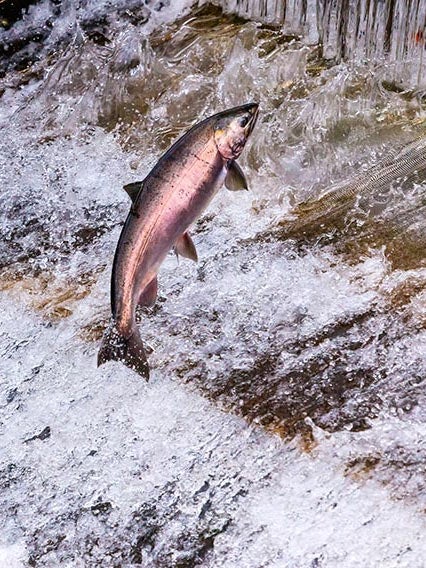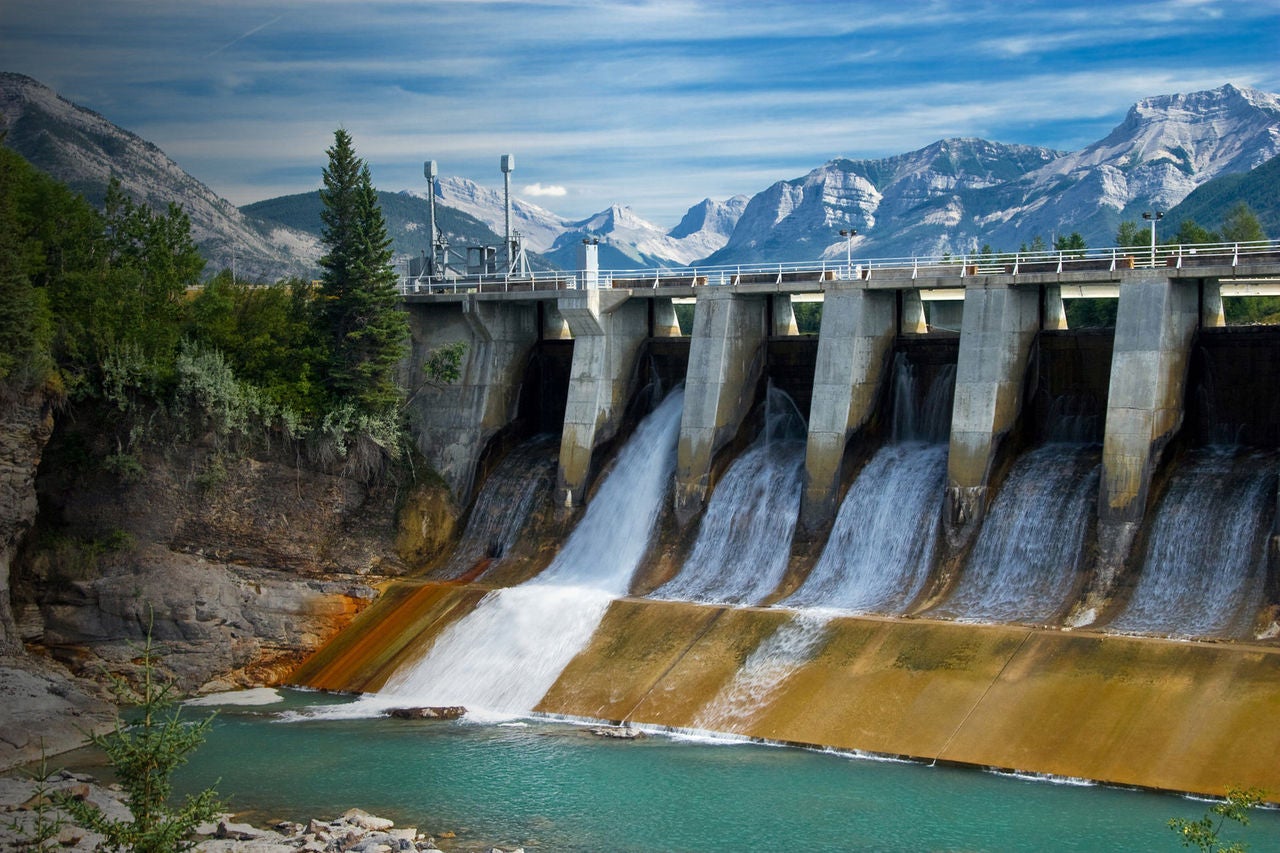Mar 29, 2022
OTTAWA, March 29, 2022– The Canadian Wildlife Federation is pleased to release two new videos about fish passage projects in British Columbia.
The educational videos showcase the removal of barriers to the migration of wild Pacific salmon on the traditional territories of Lake Babine Nation and Takla Nation in the northern interior. This project is made possible in part by funding provided by Fisheries and Oceans Canada and the Province of B.C., through the B.C. Salmon Restoration and Innovation Fund. Other videos in the series developed in 2021 focus on projects in West Vancouver, North Vancouver, Squamish and Vancouver Island.
“The projects repair historical harm to salmon and trout habitat from past construction of roads and railways across spawning and rearing streams. Many of these barriers were created prior to legislation protecting fish habitats. Local conservation organizations and provincial government agencies are among those involved in the restorations,” said Nicolas Lapointe, CWF senior conservation biologist, freshwater ecosystems. “Many of our salmon and trout populations are in dire straits and it will take collaborative efforts like these to ensure the survival of the species.” For more information and multimedia resources, visit FishPassage.ca.
About the Canadian Wildlife Federation
The Canadian Wildlife Federation is a national, not-for-profit charitable organization dedicated to fostering awareness and appreciation of our natural world. By spreading knowledge of human impacts on the environment, carrying out research, developing and delivering education programs, promoting the sustainable use of natural resources, recommending changes to policy and co-operating with like-minded partners, CWF encourages a future in which Canadians can live in harmony with nature. For more information, visit CanadianWildlifeFederation.ca.
-30-
For more information:
Heather Robison Media and Community Relations Officer heatherr@cwf-fcf.org 613-599-9594 x 212
Betty Rebellato National Fish Passage Program Improvement Coordinator bettyr@cwf-fcf.org 236-333-5885
BACKGROUND:
Technical Briefing on Fish Passage Projects Completed in 2021 with funding from the B.C. Salmon Restoration and Innovation Fund:
Cross Creek at Babine Lake Road Crossing Remediation, Lake Babine Nation
Cross Creek is a tributary to Babine Lake that provides high-quality spawning habitat to native Babine Sockeye Salmon, along with Coho Salmon, Kokanee and Rainbow Trout. Babine Lake Road crosses Cross Creek approximately 400 metres upstream from the mouth. Two culverts in poor condition blocked access to the creek during low flows. Although this crossing was only a partial (temporal, low-flow) barrier, Sockeye Salmon often attempted to access Cross Creek during low flows, when the culverts became perched and inaccessible to them. With the help of Lake Babine Nation, the B.C. Ministry of Transportation and Infrastructure, Spruce City Wildlife Association and Fisheries and Oceans Canada Resource Restoration Unit, the crossing was replaced in 2021 with an open-bottom arch. The new structure provides a natural stream bed and is wide enough to allow for passage of small mammals and other wildlife along the sides of the arch.
Sitlika Creek Crossing Decommissioning, Takla Nation
Sitlika Creek is a tributary to Takla Lake, which is believed to have supported an at-risk population of Sockeye Salmon prior to construction of a rail line in the 1950s. Habitat in Sitlika Creek is considered suitable for Sockeye Salmon and other species, including Kokanee and Rainbow Trout, which have been observed in the creek. CWF partnered with the Takla Lake First Nation and CN Rail to construct a new, open channel through the rail line right-of-way and remove the culvert from the stream, creating access to three km of high-quality spawning and rearing habitat.
MacKenzie Lake Log Jam Remediation
A log boom at the outlet of MacKenzie Lake on the central coast of B.C., which was holding back several tons of dead trees from entering the river, failed to hold back debris from the outlet of the lake. This created two large, impassable log jams on Mackenzie Creek, which connects the estuary to the lake. The river and lake system provide more than 6.5 km of spawning and rearing habitat for an important run of Sockeye Salmon (one of only three in the Inside Passage that is not in decline) as well as Coho Salmon. The Gwawaenuk Tribe worked with CWF and a local consultant to assess the extent of the log jam, determine how much of a barrier it is presenting to fish access, and remove the jam with a combination of careful blasting of log debris and cabling of logs to prevent them from becoming mobilized and creating future jams. Sockeye Salmon holding in the estuary were observed passing through the former blockage within hours of the debris being cleared.
Shuhum Creek Crossing Remediation
A culvert under Lakeshore Road that was in poor condition and blocking Coho Salmon access to Shuhum Creek from the ocean at some flows was replaced in the summer of 2021 with an open-bottom arch, with the help of the B.C. Ministry of Transportation and Infrastructure, Central Westcoast Forest Society, and Alberni Valley Enhancement Association. The new crossing restores access to approximately 2.7 km of habitat to Coho Salmon. The crossing is wide enough to also function as a safe wildlife passage route under the road, along the stream banks.
Skwawolt Creek Retrofit
Twin culverts under Highway 7 pose a tidal barrier to Coho Salmon, which have been observed in small numbers throughout Skwawolt Creek by the Chawathil First Nation. Male Coho Salmon have been observed upstream of the culverts, but fish passage is limited to conditions where flows in Skwawolt Creek and tides in the Fraser River are high enough to allow fish to access the culverts. The Lower Fraser Fisheries Alliance, Chawathil First Nation, and CWF constructed a series of rock steps at the outlet of one of the two culverts and installed baffles inside the culvert, improving access to important off-channel habitat on the Fraser River for both Coho Salmon and other Fraser River fishes.
Did You Know?
- There are 170,000 road crossings at streams containing fish habitat in B.C..
- About 92,000 closed bottom structures (culverts) block fish passage in B.C. and need to be repaired.
- CWF remediation projects target remediation for populations of Sockeye Salmon, Chinook Salmon, Coho Salmon, Chum Salmon, and Pink Salmon as well as Westslope Cutthroat Trout, Steelhead and Bull Trout.
- Each restoration project has a customized solution. In some cases, clearspan bridges or arches replace impassable closed-bottom or raised culverts. In other cases, fish ladders may offer the best solution to provide fish access to upstream habitat.
Healthy wild fish stocks support many other species of wildlife, from bears to eagles; otters to orcas.
For more information, visit FishPassage.ca.
- 0
- 1
- 2



